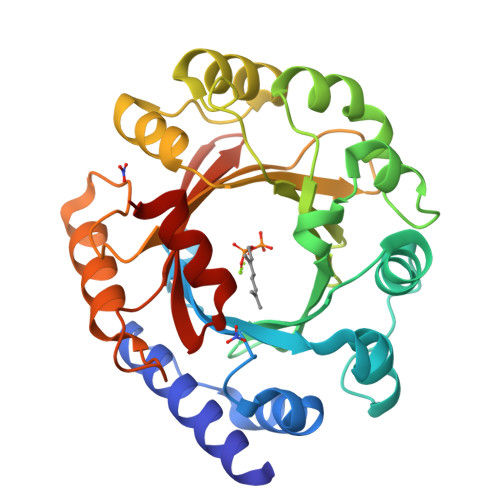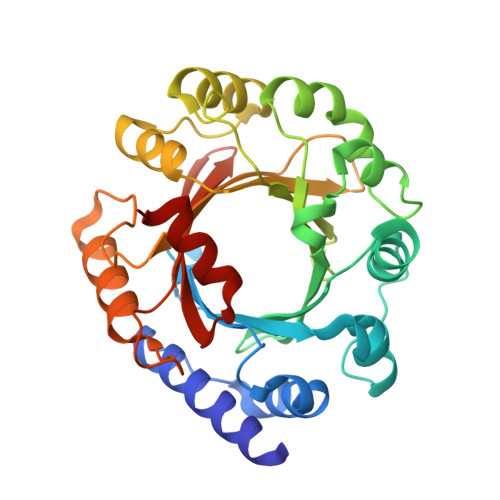Structural basis for the promiscuous biosynthetic prenylation of aromatic natural products.
Kuzuyama, T., Noel, J.P., Richard, S.B.(2005) Nature 435: 983-987
- PubMed: 15959519
- DOI: https://doi.org/10.1038/nature03668
- Primary Citation of Related Structures:
1ZB6, 1ZCW, 1ZDW, 1ZDY - PubMed Abstract:
The anti-oxidant naphterpin is a natural product containing a polyketide-based aromatic core with an attached 10-carbon geranyl group derived from isoprenoid (terpene) metabolism. Hybrid natural products such as naphterpin that contain 5-carbon (dimethylallyl), 10-carbon (geranyl) or 15-carbon (farnesyl) isoprenoid chains possess biological activities distinct from their non-prenylated aromatic precursors. These hybrid natural products represent new anti-microbial, anti-oxidant, anti-inflammatory, anti-viral and anti-cancer compounds. A small number of aromatic prenyltransferases (PTases) responsible for prenyl group attachment have only recently been isolated and characterized. Here we report the gene identification, biochemical characterization and high-resolution X-ray crystal structures of an architecturally novel aromatic PTase, Orf2 from Streptomyces sp. strain CL190, with substrates and substrate analogues bound. In vivo, Orf2 attaches a geranyl group to a 1,3,6,8-tetrahydroxynaphthalene-derived polyketide during naphterpin biosynthesis. In vitro, Orf2 catalyses carbon-carbon-based and carbon-oxygen-based prenylation of a diverse collection of hydroxyl-containing aromatic acceptors of synthetic, microbial and plant origin. These crystal structures, coupled with in vitro assays, provide a basis for understanding and potentially manipulating the regio-specific prenylation of aromatic small molecules using this structurally unique family of aromatic PTases.
Organizational Affiliation:
Jack Skirball Chemical Biology and Proteomics Laboratory, The Salk Institute for Biological Studies, 10010 North Torrey Pines Road, La Jolla, California 92037, USA.





















